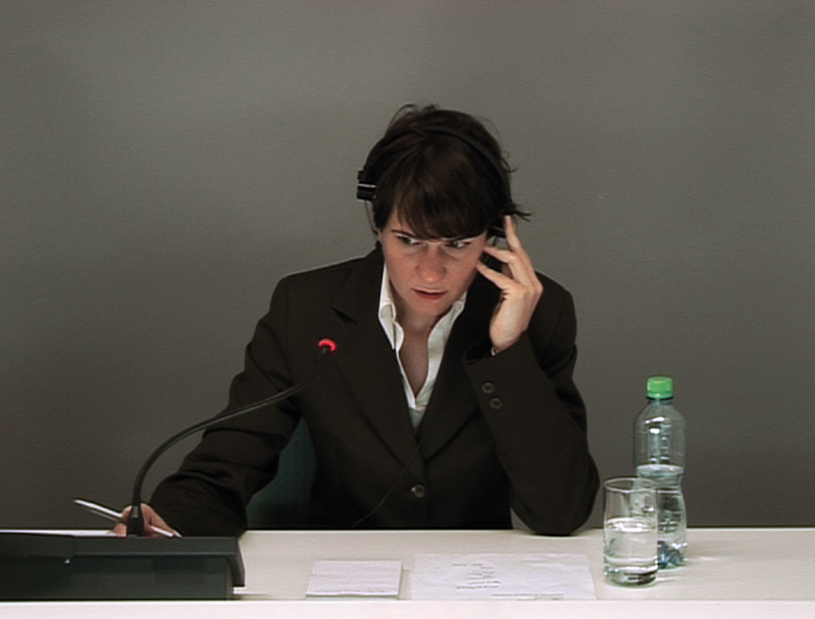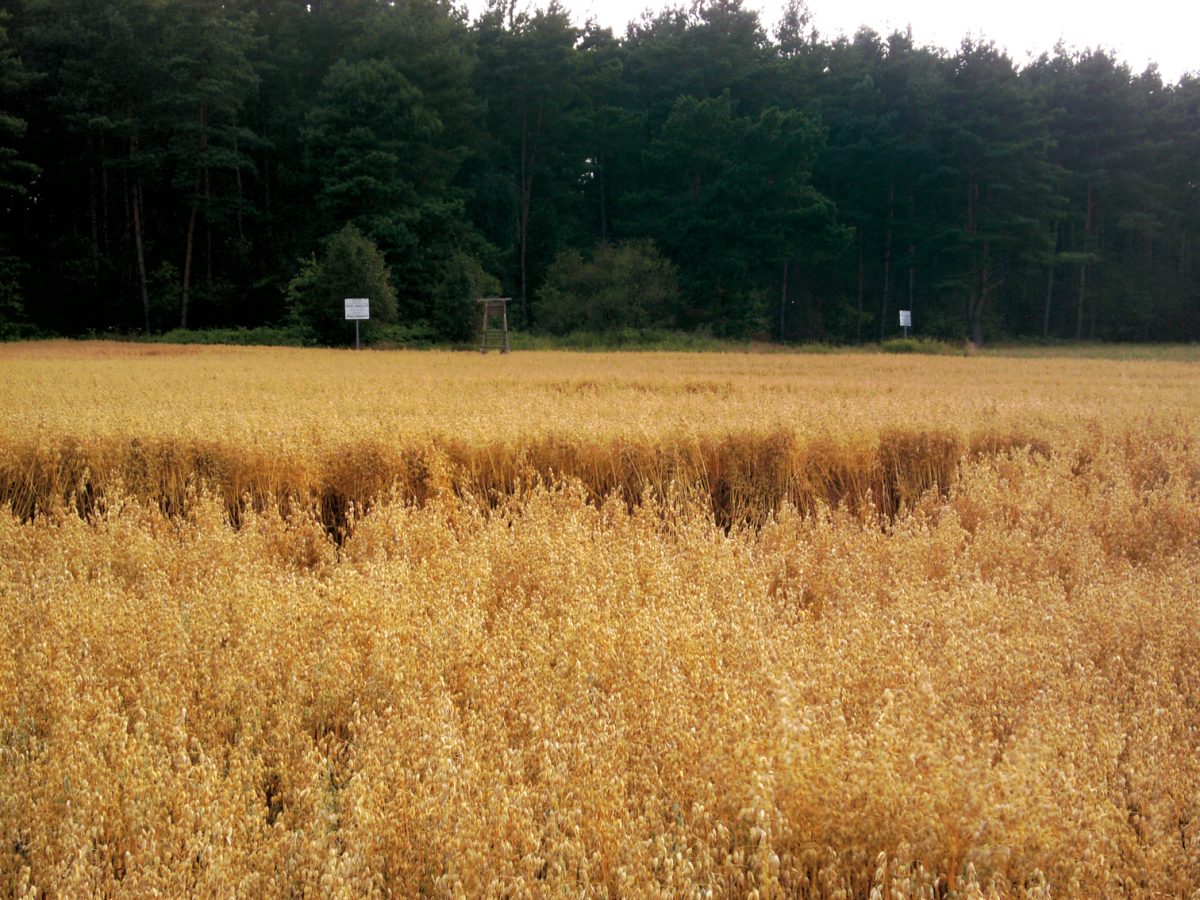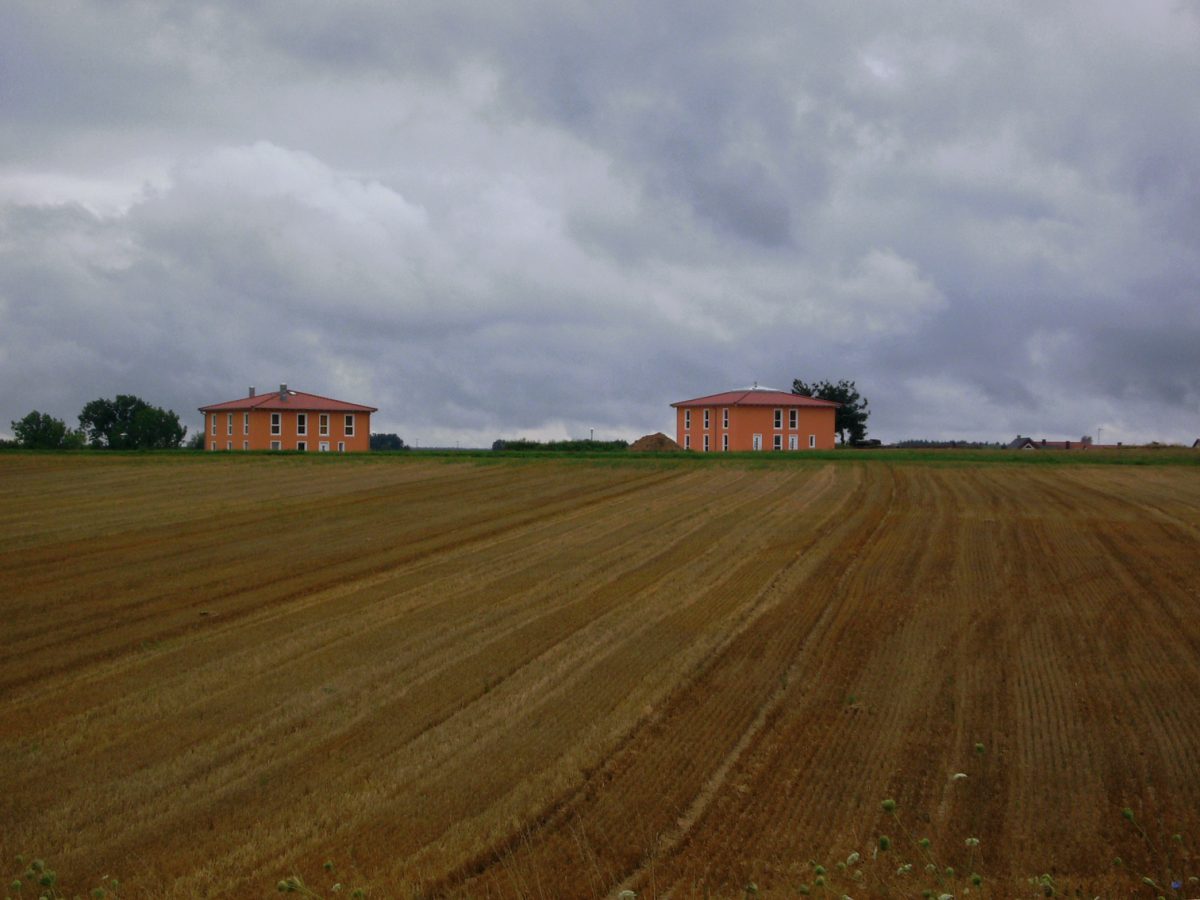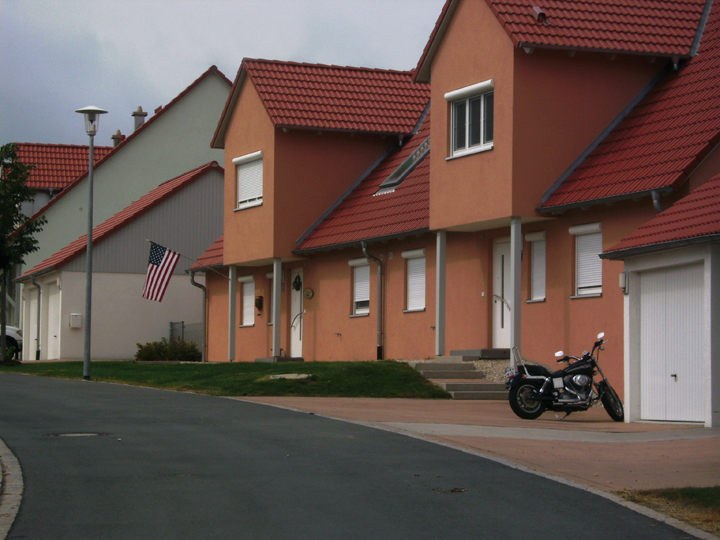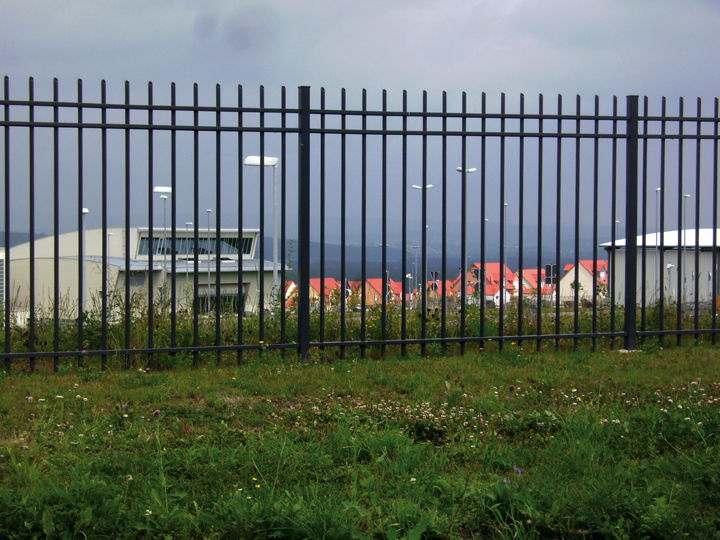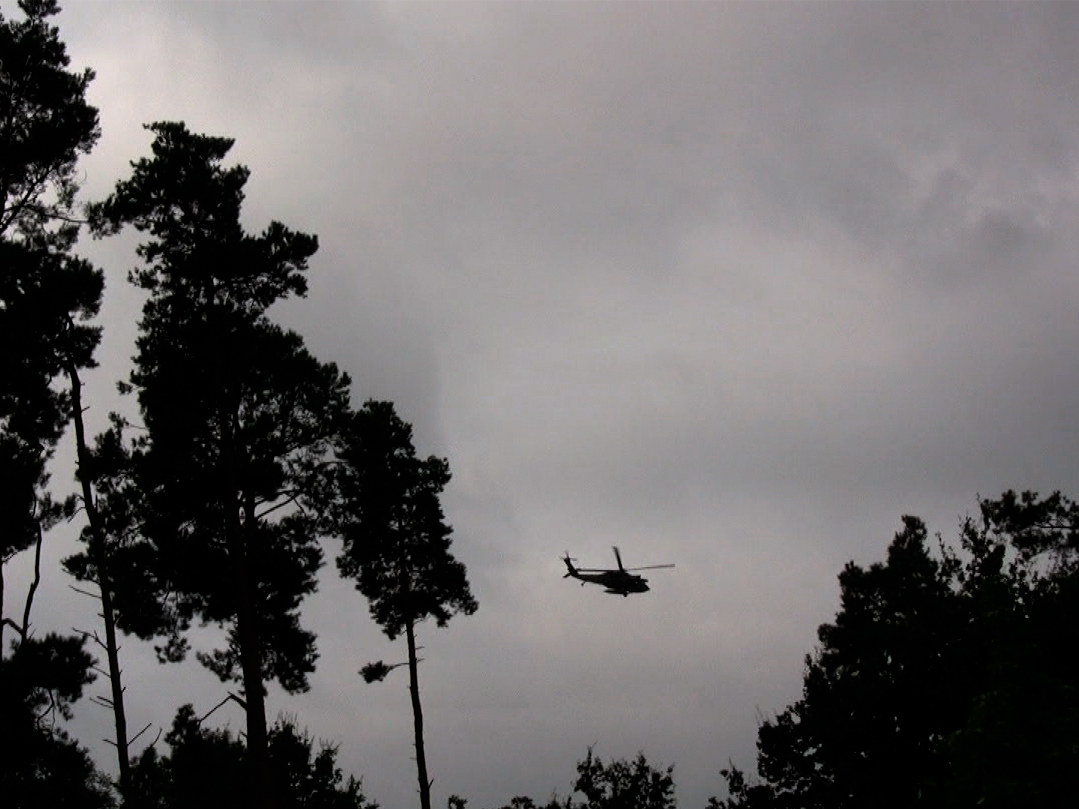Installation / 3 Canaux vidéo / Casques d’écoute / Hautparleurs / Diaporama / 20min. / 2010
Dans cette installation vidéo, des interprètes, qui, dans le monde des diplomates et des hommes d’affaires, oeuvrent habituellement dans l’ombre, sont projetés sous les feux de la rampe. Ils interprètent une conversation menée par trois personnes qui se croisent à Grafenwöhr, à côté d’un camp d‘entraînement militaire américain en Bavière : un soldat américain qui revient d’Irak, une propriétaire d’hôtel, qui héberge des soldats, et une vendeuse de voitures, bilingue. Cette conversation, que j’ai enregistrée, traite de la vie quotidienne en Bavière ainsi que dans les zones de guerre, et des opinions politiques des uns et des autres. Les interprètes en assurent la traduction simultanée. J’ai filmé simultanément chacun des trois interprètes, qui reprennent chacun les propos de l’un des participants à la discussion. C’est ainsi que j’observe chez eux la recherche de mots, la volonté de communiquer dans une situation difficile à cerner, la tentative de véhiculer un message tout en essayant de comprendre ce qui se passe, simultanément.
L’installation comprend les trois projections vidéo des interprètes devant lesquelles on peut écouter, par écouteurs, les propos interprétés par chacun d’eux. La bande originale est diffusée par haut-parleurs. L’information transmise est donc fragmentée, ce qui permet au public d’aller à l’écoute des mots, de leur sens et de leur source. On relèvera également les moments où les interprètes sont sans mots face à la conversation qu’ils interprètent, ainsi que les efforts qu’ils déploient pour se soustraire au vide. Par ailleurs, on voit sur des écrans des photos qui montrent la « frontière » entre le camp d’entraînement américain et le village bavarois. On y décèle des symboles territoriaux ainsi que des empreintes culturelles.
« Que celui qui a quelque chose à dire s‘avance et se taise! »
Karl Kraus, dans « In dieser grossen Zeit », Die Fackel n° 404, décembre 1914
L’installation a été réalisée en 2 versions : l’une avec des interprètes germanophones, l’autre avec des interprètes francophones.
Filmé à l’Université de Genève, École de traduction et d’interprétation ETI.
Installation / 3 Kanal Video / Kopfhörer / Lautsprecher / Diaporama / 20min. / 2010
In diesem Video-Audioprojekt werden Dolmetscher und Dolmetscherinnen, die in ihrem Beruf alltäglich im Schatten der zu übersetzenden DiplomatInnen und PolitikerInnen arbeiten, ins Rampenlicht vor die Videokamera gerückt und beobachtet. Am Ausgangspunkt des Projekts steht eine Audioaufnahme, die ich an der Grenze zum Truppenübungsplatz der amerikanischen Armee in Grafenwöhr, Bayern gemacht habe. Es handelt sich um eine Diskussion zwischen einem amerikanischen Soldaten, der aus dem Irak zurückkommt, einer deutschen Hotelbesitzerin aus Grafenwöhr, die SoldatInnen beherbergt und der benachbarten, zweisprachigen Autoverkäuferin. Die 3 DolmetscherInnen stellen sich dem Experiment, dieses Gespräch, in dem über den Alltag in Bayern und dem in Kriegsgebieten bis hin zu politischen Meinungen und Positionen diskutiert wird, synchron zu übersetzen.
Dieses Moment der Suche nach Wort und Sprachverständigung, des Versuchs Information zu vermitteln und des simultanen Verstehens der in einer für die DolmetscherInnen anstrengenden Situation, halte ich auf 3 separierten, synchron aufgezeichneten Videoaufnahmen fest.
Im Ausstellungsraum sind über Kopfhörer die Übersetzungen zu dem entsprechenden Videobild des Dolmetschers bzw. der Dolmetscherin zu hören. Der Originalton des Gesprächs, in Bayern aufgezeichnet, ist per Lautsprecher im Raum zu hören. Die Gesamtinformation des Gesprächs wird fragmentiert und gibt somit Raum zur Prüfung und dem Aushorchen von Wort und Sinn sowie deren Herkunft frei. Ebenso rückt hier die wiederholte Sprachlosigkeit der DolmetscherInnnen vor dem zu übersetzenden Gespräch, sowie deren Bemühungen sich dieser Leere zu entziehen, in den Blick der BetrachterInnen.
Auf Bildschirmen sind die Fotografien des „Grenzgebietes“ zwischen Truppenübungsplatz der amerikanischen Armee und der Bayerischen Dorflandschaft zu sehen. Territoriale Symbole und kulturelle Spuren sind darin erkennbar.
„Wer etwas zu sagen hat, trete vor und schweige!“
Karl Kraus, aus „In dieser grossen Zeit“ Die Fackel Nr. 404, Dezember 1914
Von der Installation wurden 2 verschiedene Versionen realisiert: eine mit deutschsprachigen DolmetscherInnen und eine mit französischsprachigen DolmetscherInnen.
Gefilmt in der Université de Genève, École de traduction et d’interprétation ETI.
Installation / 3-Channel video / Headsets / Speakers / Slideshow / 20min. / 2010
In this audio-visual project, interpreters, who normally work in the shadow of the diplomats and politicians for whom they interpret, are put in the spotlight, in front of the video camera, and observed. The starting point of this project was an audio recording that I made on the border of the US military training area in Grafenwöhr, Bavaria. It centres on a discussion between a US soldier who has just come back from Iraq, a German hotel owner in Grafenwöhr who provides accommodation for soldiers and the bilingual car saleswoman who lives next door. The three interpreters experiment with simultaneously interpreting this conversation which moves from everyday life in Bavaria and in conflict zones right through to political opinions and stances.
I filmed this moment of seeking words and comprehension, of attempting to transfer information and of simultaneous understanding in a situation that is stressful for the interpreters. The recording is on three separate, synchronously recorded pieces of footage.
In the exhibition room, the interpretations can be heard through the headsets, and at the same time the video images of the respective interpreters appear projected on three screens. The original audio conversation, recorded in Bavaria, is broadcast into the room over speakers. The information in the conversation is fragmented and thus leaves space for verification and attentive listening to the words and meanings, and their origins. The observer is also struck by the repeated speechlessness of the interpreters faced with the conversation to be interpreted, as well as their efforts to extract themselves from this void. Photographs of this “border area” between the US military training area and the Bavarian country landscape are presented on flat screens. Territorial symbols and cultural traces can be identified.
„Wer etwas zu sagen hat, trete vor und schweige!“
Karl Kraus, aus „In dieser grossen Zeit“ Die Fackel Nr. 404, Dezember 1914
There are two versions of this installation: one with German interpreters and one with French interpreters.
Filmed at the University of Geneva, École de traduction et d’interprétation ETI.





